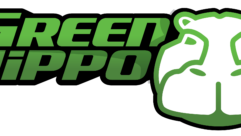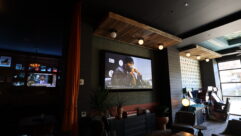Whose law is it anyway?Because the entertainment rigging industry is almost universally unregulated, purchasing controls are mandatory in case of rigging accidents.
Dec 20, 1996 12:00 PM,
By Andrew T. MartinMartin is president of ATM Fly-Ware, Carson, CA.
The entertainment rigging industry is almost universally unregulated. In the United States, a few laws originate from worker safety legislation, and some machinery standards can be applied to the entertainment rigging industry. The United States is also host to several industry guidelines and association standards. Several safety standards and quality standards are applicable to rigging hardware worldwide. Other countries, such as Germany and the United Kingdom, have specific guidelines and standards developed for entertainment rigging. But in most cases, the guidelines and standards are not laws unless the standards are oriented toward worker safety or public safety.
Local government often creates mechanical and safety standards laws or demands compliance with the standards for any work requiring a permit or license. Many other standards requirements are on a venue-by-venue basis; the venue owners themselves may require compliance with industry standards as a prerequisite to perform any work there.
Standards are not the only area of concern for the contractor. In order for the contractor to enjoy protection from product liability damages, fines or criminal charges arising from rigging accidents, purchasing controls must be implemented. Purchasing controls include qualifying vendors and products, documenting specifications and confirming products received against product specifications.
Rigging standardsThe United States federal government develops and maintains a vast compilation of laws applicable to worker safety, originating with the Occupational Safety and Health Act of 1970 (OSHA). Most of these laws do not apply directly to the entertainment rigging industry; in fact, the industry is not directly named throughout the regulations. However, sections of the regulations do directly apply.
Perhaps the most notable is Section 1910.184 Slings. Within this regulatory section of the law, it is interesting to note that chain slings used for lifting must be constructed only of alloy steel, and the slings must be removed from service, inspected and proof tested on an annual basis. Wire rope slings only require a proof test when constructed and a tag designating compliance with OSHA regulations.
Other OSHA regulations exist in regard to fall protection, workplace equipment, machinery safeguards and workplace environment. Any of the local OSHA offices can explain the regulations applicable to your branch of contracting. The help lines are confidential and do not generate any threat of inspection or audit. In California, contact CAL-OSHA.
Failure to comply with any OSHA regulations can result in substantial fines, substantial enough to put companies out of business. Government fines are serious because declaring bankruptcy in the United States does not relieve the debtor from federal government debts. All federal laws must be observed absolutely; noncompliance is inexcusable. Financial hardship or economic distress are not mentioned anywhere in the regulations.
U.S. state and local government regulations are much more complicated. It is at this level of government regulation that most structural and mechanical, and sometimes inexplicable, codes are developed and enforced. Almost every state and local government requires compliance with accepted industry standards such as the American National Standard Institute (ANSI), the American Society of Mechanical Engineers (ASME), Underwriters Laboratories (UL), the Uniform Building Code (UBC), National Electrical Code (NEC) and, in some cases, Military Specification (MIL).
The best solution for compliance with the varying regulations is to design, purchase and assemble rigging systems using components complying with as many standards as possible. Look for rigging components that comply with ASME B30.20-1993 Below-the-Hook Lifting Devices. This standard is enacted into law by most government agencies and applies directly to the entertainment rigging business.
Other standards to look for do not originate in the United States. For instance, the law for the European Union (EU) member states is the European Communities Act 1972, a comprehensive safety standard. Products complying with the standards have a CE mark on the product. The most applicable part of the statutes for entertainment rigging industry hardware is Health and Safety – The Supply of Machinery (Safety) Regulations 1992 and Health and Safety – The Supply of Machinery (Safety) (Amendment) Regulations 1994, commonly referred to as the “machinery directive.”
This directive requires strict compliance in the areas of worker protection, machinery complexity, machinery instruction and labeling, mechanical hazards, other hazards, maintenance, indicators, fire, electrical hazards, movement, controls, stopping, load limitations, traceability and enforcement. Products qualifying for the CE mark will most likely be in compliance with most regulations applicable to the entertainment rigging industry.
The most comprehensive standards available to the entertainment rigging industry are those developed through industry organizations and associations. By and large, the entertainment rigging industry is self-regulating. Many undocumented industry rules are passed on from generation to generation. Sometimes the rules get confused over time or were bad to start with.
Within the past few years, many admirable individuals have decided to accept the unrewarding task of serving on committees to design industry standards specifically for the entertainment industry. Most of these committees are organized through industry associations, such as the United States Institute for Theatre Technology (USITT), Entertainment Service and Technology Association (ESTA), National Systems Contractors Association (NSCA) in conjunction with National Institute for Certification in Engineering Technologies (NICET) and various other trade groups. A few efforts have been put forth by individuals, such as the Loudspeaker Enclosure Structural Standard presently in its second working revision as developed by myself and ATM Fly-Ware.
These standards apply directly to the hardware types and the use of the hardware within the entertainment rigging industry. Most of these standards are not enacted into law, but they are an invaluable tool to determine the safe application and proper selection of rigging hardware and systems.
Purchasing controlsVendor qualification is a vital part of purchasing control. Vendors for rigging hardware should be chosen only after great scrutiny in the areas of product marking, testing, traceability, engineering, technical service, product service, technical documentation and customer service. A check list is an excellent way to approve and qualify vendors: Keep the checklist as a permanent record in case you must prove due diligence in regard to purchasing. The approved vendor list should be updated at least annually.
Product qualification is relatively simple if you are purchasing a standard product from a professional rigging manufacturer. The products must be rated for overhead suspension, and an official document or certification must be kept to show proof. Also, only products with complete traceability should be purchased for overhead suspension use. Product traceability is an intensive information tracking system used by manufacturers to protect themselves from product liability lawsuits. In effect, a good product traceability system tracks the following items in detail via the use of a serialized number or sequence:
* Material vendor.* Material specification.* Material certification.* Part print and drawing revision.* Part structural certification.* Part handling.* Each manufacturing process.* Quality-tolerance check.* Each operator’s certification, if required (such as a welder’s certification).* Overall tolerance checks.* Each outside vendor or subvendor.* Outside vendor or subvendor product specifications.* Certificates of conformance or test certificates.* Overall quality checks.* Date of manufacture.* Date of release to sale.
Product traceability must also incorporate a permanent means of marking the product with the serial number or sequence number. If room exists on the product or packaging, most companies with legitimate product traceability systems will apply a sticker with the serial number or sequence number along with the manufacturer’s name, country of origin, part description, working load limit and other product information.
For custom-built products, product traceability and certification is an absolute must for the contractor. Without this type of traceability, the contractor is subject to all damages occurring from product failure. At a minimum, every custom product must be approved via calculations by a professional engineer; confirmation by destructive testing is even better.
Another aspect of purchasing control is to verify that parts delivered match the exact specifications of the parts ordered. A strict policy should be maintained, and all certifications and instructional documents should be kept for the life of the product. This information is mandatory if a product failure occurs because the contractor installs the wrong part for the application, even though the proper part was originally specified.










